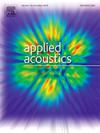Single-beacon AUV navigation algorithm under period offset conditions
IF 3.4
2区 物理与天体物理
Q1 ACOUSTICS
引用次数: 0
Abstract
Underwater positioning and navigation technology is one of the key technologies for autonomous underwater vehicles to complete tasks efficiently. The navigation and positioning technology of single-beacon autonomous underwater vehicles has been highly valued because of its advantages such as simple and convenient placement. The existing implementation schemes are mainly based on arrival time information or arrival time difference information, and the prior knowledge they need includes synchronization time and signal cycle. However, due to the influence of the marine environment, such as low temperature and high pressure, the period of beacon transmission signal may be offset, resulting in navigation error increase or even failure. To solve this problem, this paper proposed a navigation method with looser application conditions, which is improved based on the TDOA algorithm, and it requires neither synchronization time nor signal cycle. Secondly, the influence of different motion trends on navigation accuracy and the influence of different measurement errors on the algorithm are analyzed by a full differential equation. Finally, the performance of the proposed algorithm is verified by simulation experiments and actual data. The results show that when the signal cycle is accurate, the accuracy of the proposed method is almost the same as that of the navigation algorithm based on TDOA; when the signal cycle offset leads to an increase in TDOA error or even failure, the method still has good adaptability and stability.
求助全文
约1分钟内获得全文
求助全文
来源期刊

Applied Acoustics
物理-声学
CiteScore
7.40
自引率
11.80%
发文量
618
审稿时长
7.5 months
期刊介绍:
Since its launch in 1968, Applied Acoustics has been publishing high quality research papers providing state-of-the-art coverage of research findings for engineers and scientists involved in applications of acoustics in the widest sense.
Applied Acoustics looks not only at recent developments in the understanding of acoustics but also at ways of exploiting that understanding. The Journal aims to encourage the exchange of practical experience through publication and in so doing creates a fund of technological information that can be used for solving related problems. The presentation of information in graphical or tabular form is especially encouraged. If a report of a mathematical development is a necessary part of a paper it is important to ensure that it is there only as an integral part of a practical solution to a problem and is supported by data. Applied Acoustics encourages the exchange of practical experience in the following ways: • Complete Papers • Short Technical Notes • Review Articles; and thereby provides a wealth of technological information that can be used to solve related problems.
Manuscripts that address all fields of applications of acoustics ranging from medicine and NDT to the environment and buildings are welcome.
 求助内容:
求助内容: 应助结果提醒方式:
应助结果提醒方式:


